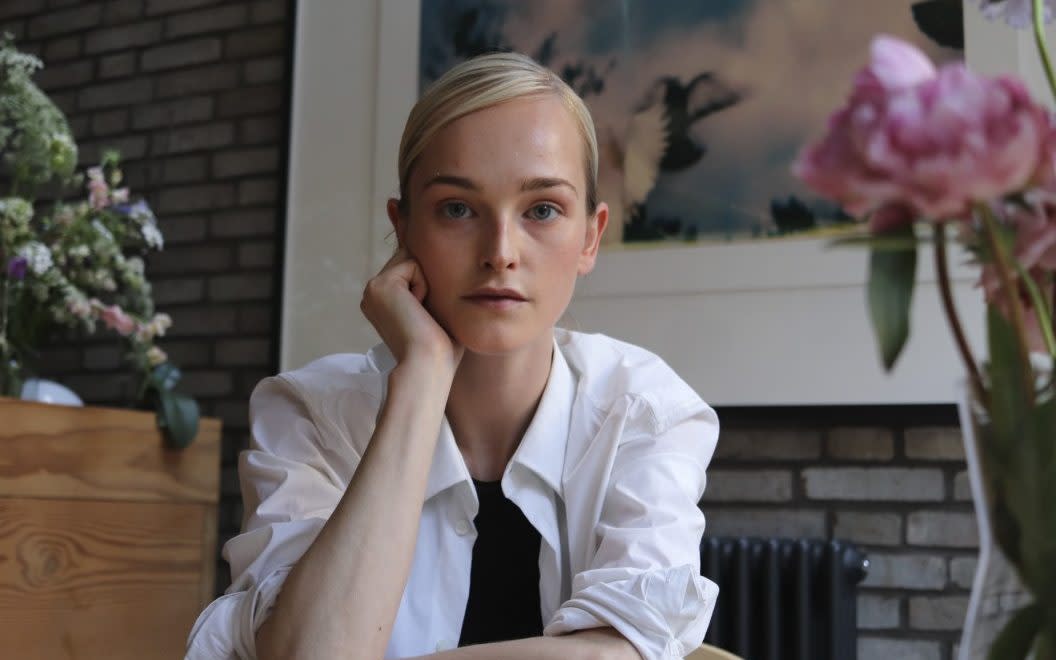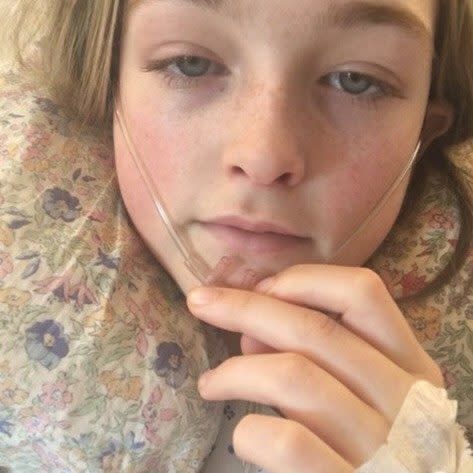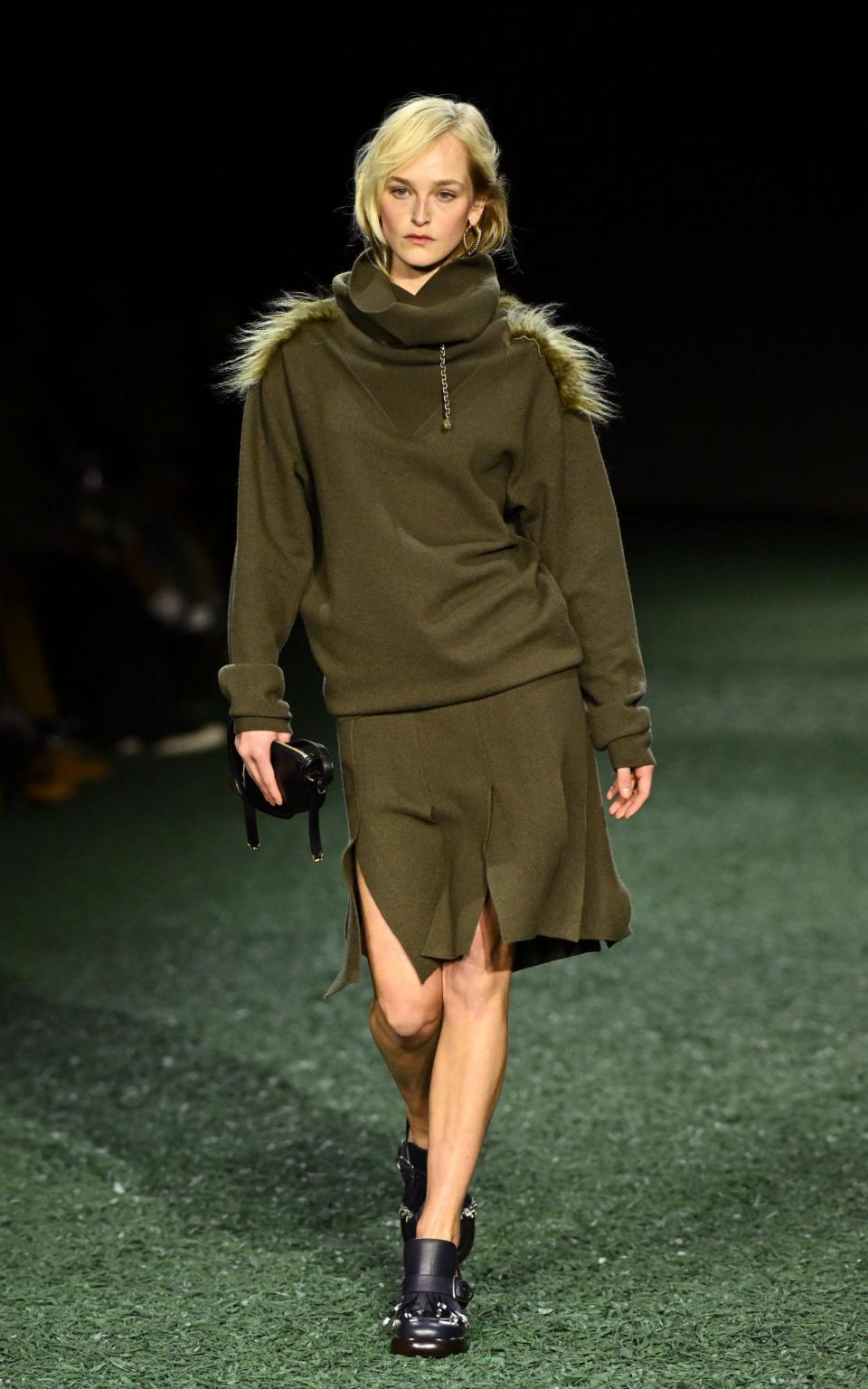‘After four operations, no one understood why I was still in such intense pain’

My first experience of tangible, physically damaging pain happened on a ski trip in the Alps. I was small for my age at 12 and a man crashed into me from the side, sending me flying 10 metres through the air.
I crashed down, with my right arm flung behind me at such an angle that it ripped apart muscles, tendons and tissue in my shoulder.
The man skied away and I never found out who he was. I was rushed back to London and, after a complex diagnosis, I had an operation to repair the damage.
At 13, doctors told me I was the youngest person to ever undergo this surgery, with the next youngest being a 25-year-old in a high-impact car crash.
Retrospectively, this accident was the catalyst for the chronic pain I have known ever since, as it accelerated a pre-existing condition that I had been born with, called hip dysplasia.
If you picture your hip joint, a “ball” (the top of the thigh bone) should fit into the cup-shaped “socket” of your hip. In hip dysplasia, the socket is too shallow, meaning the bone isn’t held in place correctly.
I was diagnosed at 15, after developing hip pain that had been getting progressively worse. It had crept up on me. I dismissed it as normal aches until it got to the point that I couldn’t walk properly without limping.

After a series of scans, X-rays and MRIs, doctors said that my body had taken such a hit during the skiing accident that it tore the thick rim of cartilage inside the hip socket, accelerating the rate at which my hips were deteriorating.
At 16, I underwent surgery to break my pelvis in three places and readjust it with three six-inch screws.
After the operation, I spent a month in a wheelchair and on bed rest, three months on crutches and it took a year and a half before I was able to walk properly – the time it took to recover was the hardest part.
The short term and long term effects of painkillers were difficult. I had to keep the pain manageable enough to allow me to move again, which your body doesn’t allow when the pain is too extreme. It made school really difficult when I was able to attend again after the surgery because the pain killers affected my memory.
I didn’t understand what was wrong but also felt the pressure to achieve academically.
When I look back now, with peace of mind and a manageable relationship with my pain, the shock I experienced resulted in dissociation, which meant I was unaware then of how much my world had been turned upside down.
There were huge implications for my family – my parents [Colin Campbell, the seventh Earl of Cawdor, and Lady Isabella Campbell, a former editor at British Vogue] and three younger siblings.
I felt like I was freefalling physically as well as psychologically and I couldn’t express what I was experiencing. Small things like having to ask someone else to put my underwear or socks on were humiliating and I couldn’t control my frustration.
Sometimes my painkillers would wear off in the middle of the night and I would lie awake in agonising pain, unable to get back to sleep. This sadness, depression and fear would come out as frustration and anger towards those closest to me.

While my right hip was recovering, to my horror, I started to feel a familiar pain in my left hip. Scans showed that I needed to have the operation done all over again on my left side.
At 18, when I finished my A-levels, and having just recovered from the first set of operations, I underwent surgery to repeat the whole process again.
At that point, my modelling career was starting. I had been scouted at the Clothes Show Live in Birmingham at 13 and did my first shoot at 16 with British Vogue, just before my first surgery. In those years, while on crutches, I worked with Burberry and Louis Vuitton.
By the time the operations were all done, I guess my expectation was that I would go back to normal. But that wasn’t the case.
At 20, I was living in New York and my modelling career was taking off.
I felt so lucky to be part of this magical world that was so unfamiliar and exciting. I loved meeting and working with creative, incredible artists.
I had been to Jaipur, India, with documentary photographer Ryan McGinley and to the south of France with Chanel. It was so beautiful and I couldn’t believe that my work could take me to these places.

Travelling so often for work offered an escape from the constant demands of my body, not having time to process the pain I was feeling. For many reasons, I didn’t feel it was acceptable for me to not be okay. I did my best to ignore it but my hips and legs were in pain.
I had more scans and doctors told me my condition was progressive and would get worse. In order to be pain-free, they said I would need eight more surgeries, over a period of six years. They would break the tops of my legs and readjust them, then cut off the balls that go into my hip sockets and readjust them as well. It was shattering news. The fear I felt was paralysing. I thought I would be returning to some kind of normal after the first four operations.
Having found a lot of freedom in sports and running in particular, it was gutting that any exercise that would create impact through my hips was now off the cards.
Pain had overtaken me and become part of my life but I didn’t see more surgery as an option. I chose not to go ahead with it and manage it in other ways.

During that time, the most difficult thing was feeling completely detached from my body and believing that it was never going to be any different – being without hope.
I now know that I had complex chronic pain – which, as well as physical structural issues, results in major complications for your mental health. Now I have chronic pain, which is part of my reality but not the reality.
Throughout my teens and earlier 20s, I had no idea that this is what I was dealing with and felt so guilty. I didn’t know how to deal with my pain, or talk about it. It was a very, very lonely place to be.
I knew I couldn’t just take painkillers for the rest of my life so began exploring alternative solutions out of desperation.
The last thing that I expected was that low intensity exercise and meditation could help me – which is, in fact, how I now cope with my ongoing agony.
Two things I now can’t live without are meditation and moving my body. Meditation connects me to something outside myself, while also reconnecting me to my body.
Low intensity strength and conditioning exercise is equally important as it gives me control over my pain and has made me appreciate what my body can do. These two things have been total gifts.
Now, at 27, I’m telling my story because it’s important to hear about the reality of pain.

It is an absolute given in everyone’s life. None of us are immune. It’s a funny thing to define because it can cover a paper cut as well as intense, emotional pain, like loss.
My intention with my new podcast, I’m Fine, is to break the isolation. In the UK, one in three people suffer from chronic pain (pain which lasts more than three months) and 70 per cent of sufferers are women.
In my latest episode I talk to Penelope Tree – a model and icon of the 60s who was the muse of photographer David Bailey – who seems untouchable but has battled an eating disorder.
As much as I’ve come to a place where my pain is manageable, it’s still constantly there. It’s a dull ache. Some days are worse than others. Sometimes it can be sharp or shooting.
While I wouldn’t want to go through it again, would I take my life without the pain I’ve had? I’m not sure that I would because it’s taught me so much – empathy, as well as a depth and texture I otherwise wouldn’t have.
And while it took me a long time to realise it, there’s so much opportunity in pain.
I’ve used it as a creative stimulus for the podcast – a resource I would have really loved to have had. I’m trying to make a positive contribution in an “I’m fine” culture, which doesn’t help anyone.
I’m Fine is available to listen on Apple and Spotify
As told to Emily Craig

 Yahoo News
Yahoo News 
